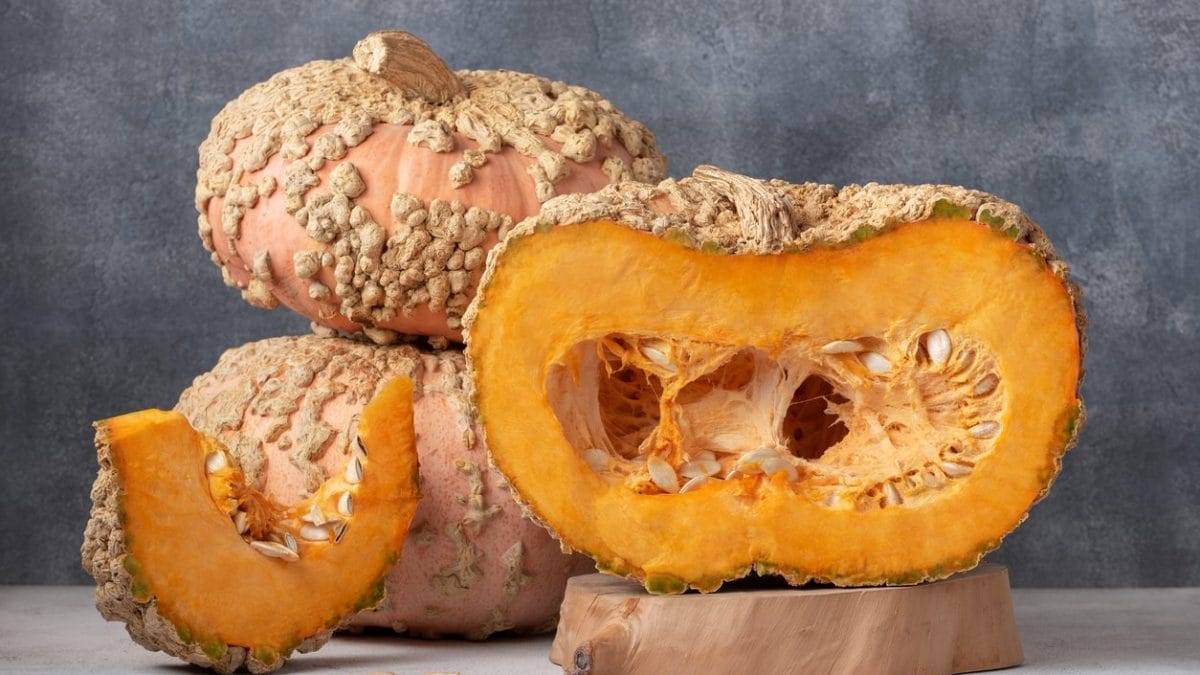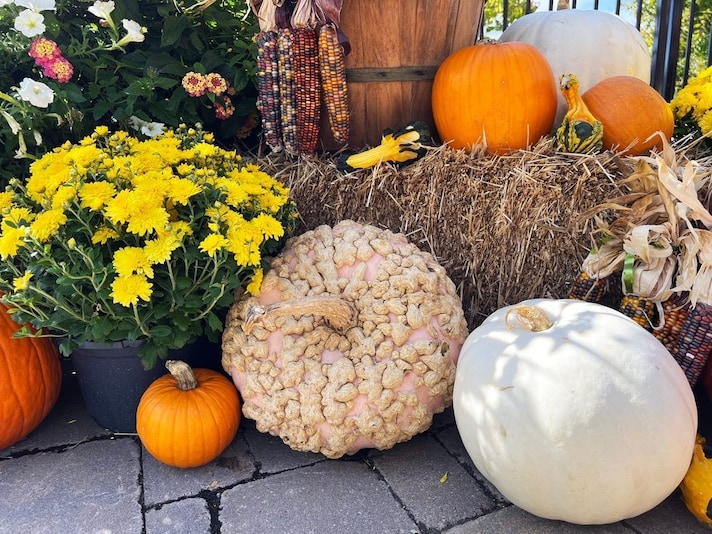
Autumn is one of the most beautiful seasons of the year, especially at the table: many delicious ingredients make their appearance, including the beloved pumpkin. As we know, there's more than just one type of pumpkin, and here we want to delve into a variety that many people may not yet be familiar with: it's called Galeuse pumpkin and is one of the oldest in the world. It has a very bizarre appearance and a decidedly original flavor: let's discover all its characteristics.
A French Squash Covered in "Peanuts"
The Galeuse squash comes from France, specifically from the marshy area of Eysines, a small town near Bordeaux, from which it takes its full name, which is, in fact, Galeuse squash from Eysines. One of its most striking characteristics is obviously its appearance, which is characterized by small growths that resemble peanuts, which is why it is also called peanut squash. Its color is also decidedly different from other varieties, with a pink-orange skin, on which we find these sort of scars, which form naturally during growth and also serve a protective function, especially from insects and bad weather, which is why it is a type of squash that is particularly resistant to winter.
As for the flavor, those who love pumpkin already know that this vegetable has a generally sweet taste, but the Galeuse pumpkin is considered by the French to be the best in the world: it has a particular hint of hazelnuts and chestnuts, characteristics that certainly make it one of the most prized.

How It Is Grown and Where It Is Found
The Galeuse squash was originally grown only in the Eysines area: over time, and thanks to its unique characteristics, it has attracted the attention and interest of many. Although it is not one of the most typical varieties of our country, today it can be found on the market thanks to the work of a few small producers particularly interested in this fantastic product.
As for size, this pumpkin varies from 30 to 50 centimeters in diameter and can weigh up to 15 kilos. Like all pumpkins, growing it doesn't require any special attention: it's planted in May and June in warm areas, and between March and April in colder areas. Harvesting takes place between September and October: to determine if it ‘s ripe, it's best to wait until the stem is completely dry.

How to Use It in Cooking
Like other pumpkin varieties, the Galeuse pumpkin is perfect for use in both sweet and savory recipes. Its distinctive flavor is ideal for soups, for example, but also for risotto, especially when paired with chestnuts, or paired with speck for a delicious main dish. It's also delicious sliced and roasted in the oven, then seasoned with oil, herbs, and cheese. Don't forget the seeds: large and plentiful, they're usually peeled, toasted, and enjoyed as a delicious, healthy snack.
Thanks to its aromatic notes reminiscent of hazelnuts and chestnuts, Galeuse squash is also perfect as an ingredient in your desserts: try using it to prepare muffins or cupcakes, but also in a delicious roll filled with ricotta and chocolate chips. And why not try making one of America's iconic autumn desserts? A pumpkin pie, with its aroma of cinnamon and nutmeg, is the perfect treat for cool October evenings.
;Resize,width=767;)
